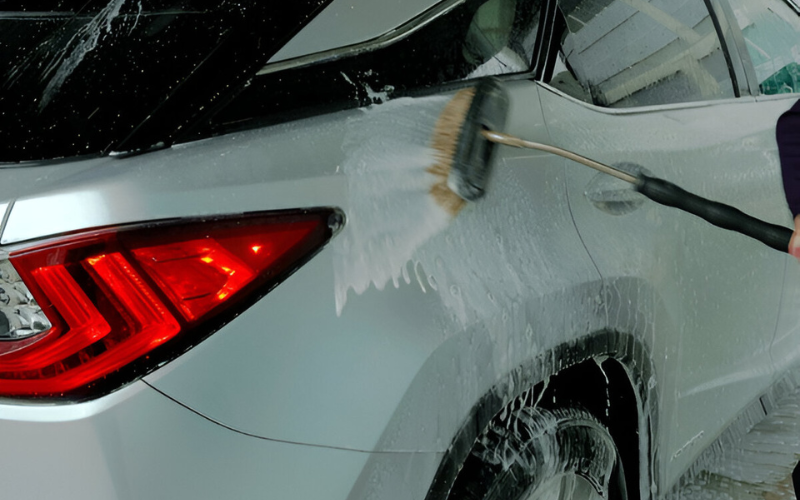Introduction
Keeping your car clean doesn’t have to mean constant trips to the car wash or spending extra cash every week. A do it yourself car wash is not only budget-friendly but also gives you full control over how your vehicle is treated. Whether you’re protecting your car’s paint or just enjoy taking care of your ride, washing it yourself can be both satisfying and practical. In this guide, you’ll learn how to wash your car at home like a pro — using simple tools, proper steps, and eco-conscious methods that work.
Why Choose a Do It Yourself Car Wash
Many people turn to DIY car washing for one big reason — it saves money. Commercial car washes may seem fast and convenient, but over time, those costs add up. Washing your car at home means you avoid the repeated expense and instead invest in a few reusable tools that last a long time.
Another major benefit of a do it yourself car wash is control. At a professional car wash, you don’t always know what soaps or brushes are being used. Some products might be too harsh for your vehicle’s paint, and automated brushes can leave micro-scratches. When you clean your car yourself, you choose what goes on the surface — from gentle soaps to soft drying towels — making it safer for your paint and trim.
There’s also the environmental factor. DIY washes allow you to use less water and biodegradable soaps, especially if you’re mindful about how much water flows and where it drains. This is especially important in areas with water restrictions or environmental protection zones. Washing your car at home lets you make eco-friendly choices without sacrificing cleanliness.
Tools and Supplies You’ll Need
To start a do it yourself car wash, you don’t need expensive or high-end tools. Just the basics will get the job done.
Your must-haves include a hose with a spray nozzle, a bucket, a car wash mitt or soft sponge, and a car-safe soap. Avoid household detergents like dish soap, as they can strip away wax and damage the finish. Use products specifically designed for cars — they clean effectively without being too harsh.
Drying is just as important as washing. You’ll want microfiber towels or a soft chamois cloth that won’t scratch the paint. These materials soak up water quickly and don’t leave lint or streaks behind.
If you want to go a step further, you can add optional extras like a foam cannon (for easier soap application), a separate bucket for rinsing the mitt (to avoid reusing dirty water), or wheel brushes to get into tight spots on your tires. These additions aren’t essential, but they can make the job quicker and more effective.
Step-by-Step Process for Washing Your Car at Home
Preparing Your Car and Washing Area
Start by parking your car in a shaded, cool area. This helps prevent water and soap from drying too quickly, which can leave spots on the surface. Make sure your windows are up and doors closed. If you’re washing on a driveway, consider sweeping away loose dirt or debris that could get kicked up during the wash.
Rinsing and Applying Soap Properly
Begin with a thorough rinse from top to bottom to loosen dirt. This reduces the chance of scratching your paint when you scrub. Next, mix your car soap with water according to the product’s instructions. Use your wash mitt to gently scrub the vehicle, again starting from the roof and working down. This method ensures that the cleaner, less dirty areas are cleaned first, and the dirtier areas like the lower panels and wheels come last.
Make sure to rinse often. Letting soap dry on your car can cause streaks. Rinse each section before moving on to the next if it’s a hot day or if you’re working slowly.
Drying Without Leaving Streaks or Water Spots
Once the car is clean, it’s time to dry. Don’t let it air dry — this often causes water spots. Use a clean microfiber towel or chamois to carefully dry the car, starting from the top. Gently pat or wipe the surface to remove all moisture, rotating towels as they get soaked. Take your time around mirrors and crevices, where water tends to hide.
Common Mistakes to Avoid When Washing Your Car
One of the most common mistakes in a do it yourself car wash is using the wrong tools — like an old towel or dirty sponge. These can contain small debris that scratch the surface of your paint. Always start with clean, soft materials.
Another problem is using too much detergent or the wrong kind. More soap doesn’t always mean more cleaning power, especially if it’s not meant for vehicles. Strong household cleaners can strip away wax and damage your paint.
Also, avoid washing your car under direct sunlight, especially during summer. Heat causes soap and water to dry quickly, leaving behind marks that are hard to remove. Shade or early morning/late afternoon hours are better options.
How Often Should You Wash Your Car Yourself?
The ideal frequency depends on your climate, where you drive, and how often you use your car. For most people, washing their car every two to three weeks is enough. If you live in a dusty area or near the ocean (where salt can damage paint), you might want to clean it more often.
Pay attention to signs like visible dirt, water spots, or dull paint. If your car feels sticky to the touch or has bird droppings, bugs, or tree sap — it’s definitely time for a wash. Keeping a consistent cleaning schedule protects your paint and helps your car look newer, longer.
The Best Time and Place for a DIY Car Wash
Timing matters when washing your car at home. Choose a cool, cloudy day or early morning before the sun gets too strong. Avoid windy days — dust can stick to wet surfaces, ruining your efforts.
As for location, a flat surface like a driveway is perfect. Make sure water runoff won’t cause problems for neighbors or nearby plants. If your city has water-use regulations, check local guidelines to avoid any fines or violations.
Some people even use waterless or rinse-less wash products when they don’t have access to a hose. These are great alternatives for apartment dwellers or areas with water restrictions — but be sure to follow instructions carefully to avoid scratching the paint.
Conclusion
A do it yourself car wash isn’t just about saving a few dollars — it’s a way to take better care of your car, on your terms. With the right tools, a good spot, and a little practice, you can keep your car looking clean and protected all year round. Plus, the process itself can be a relaxing and satisfying weekend task. Whether you’re cleaning after a long road trip or just maintaining your vehicle, doing it yourself is a smart, simple choice.
FAQ
Q1: Is a do it yourself car wash safe for the paint?
Yes, as long as you use proper tools and car-specific products. Avoid rough materials and always rinse thoroughly to protect your paint job.
Q2: Can I use dish soap to wash my car at home?
It’s not recommended. Dish soap can remove wax and may damage the clear coat. Use a pH-balanced car wash soap instead.
Q3: How much water does a DIY car wash use?
On average, a typical hose-and-bucket car wash uses 40–100 gallons of water. Using a spray nozzle and turning off the hose between rinses can significantly reduce water use.
Q4: What’s the best way to dry the car without scratching it?
Use a clean microfiber towel or chamois cloth. Patting instead of dragging the towel reduces the risk of scratching the paint.

